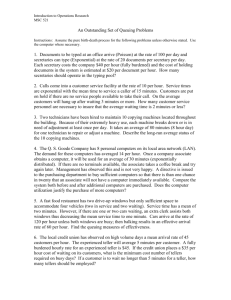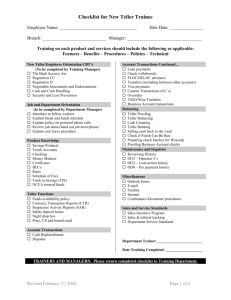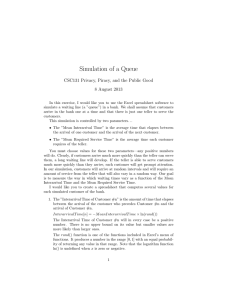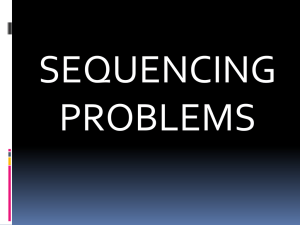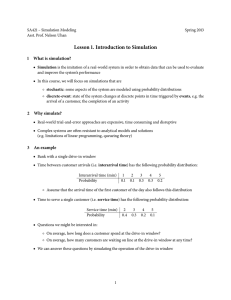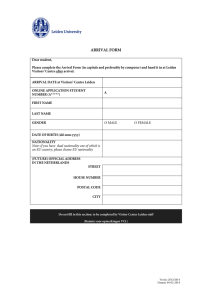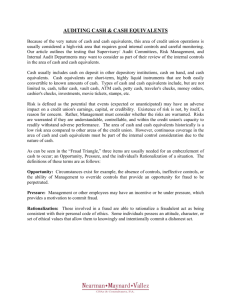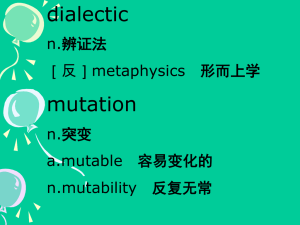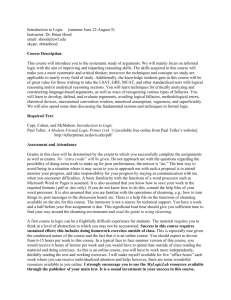Week 5
advertisement
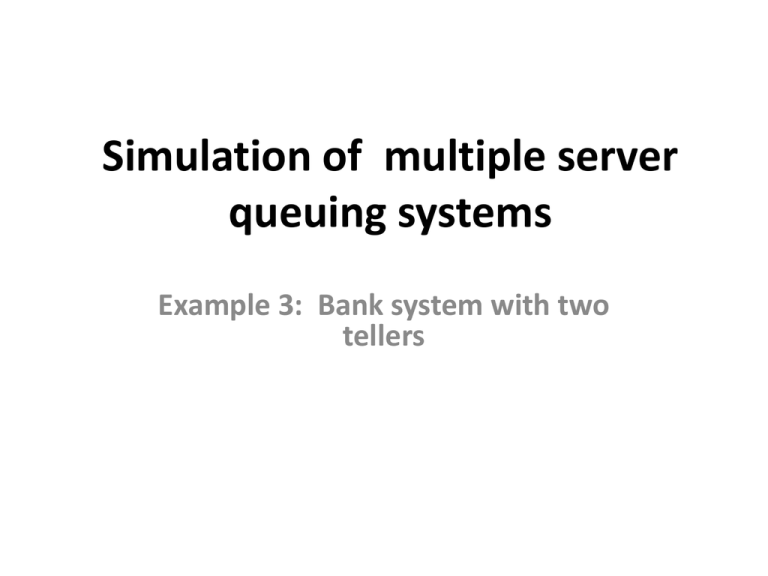
Simulation of multiple server queuing systems Example 3: Bank system with two tellers 2 Example 3 Bank system with two tellers: A bank has two tellers. Customers arrive at this teller at random from 1 to 4 minutes apart. Each possible value of interarrival time has the same probability of occurrence. The service times vary from 1 to 6 minutes with the same probabilities for each teller. The problem is to analyze the system by simulating the arrival and service of 20 customers. Solution: Distribution of time between Arrivals Time between Arrival (Minutes) 1 2 3 4 Probability Cumulative probability Random-Digit Assignment Service time Distribution Service time (Minutes) Probability Cumulative probability Random-Digit Assignment 1 2 3 4 5 6 A set of uniformly distributed random numbers is needed to generate the arrivals at the teller and another set is needed to generate service times for each teller. Random numbers have the following properties: 1. The set of random numbers is uniformly distributed between 0 and 1. 2. Successive random numbers are independent. Simulation table : Bank system with two tellers Teller 1 Time Since Cust Last Arrival ome (Minutes) r Arrival Time Time Service Begins Service Time 1 2 3 4 5 6 7 8 9 10 4 1 4 3 3 2 1 1 2 Tot 21 22 Av. 2.33 2.2 Pr. 4 5 9 12 15 17 18 19 21 4 Time Time custom Custome er Time Time Time r Waits in spend servic Servic Servic servic Queue in e ends e e Time e ends System Begins Teller 2 4 6 4 10 5 9 12 15 1 6 5 4 6 3 1 1 6 2 3 7 4 12 3 37 1.2 0.3 3.7 3 1 8 10 13 21 17 19 21 0 0 0 0 0 0 0 1 2 0 2 2 19 21 26 21 4 25 0.2 Idle Idle Time Time of of Server Server 2 1 0 0 5 1 2 2 7 0 0 0 4 13 0.15 0.5 System statistics • • • • • • • • • • • Average time between arrival – (sum of all interarrival times)/(number of arrivals-1)=21/9 =2.33 Expected time between arrival E(T) =∑ ti*p(ti)= 1× 0.25+ 2× 0.25+ 3× 0.25+4× 0.25= 2.5 Average service time teller1: – (total service time)/(total number of customer)=22/10=2.2 Average service time teller2 – (total service time)/(total number of customer)=12/10=1.2 Expected service time teller 1 & 2 Average waiting time – (total waiting time in queue)/(total number of customers) =3/10=0.3 Probability of waiting • (number of customers who wait)/(total number of customers) =2/10=0.2 Probability of idle server teller1 • (total idle server time)/(total run time of simulation) =4/26=0.15 The probability of the server being busy teller1 = 1- 0.15=0.85 Probability of idle server teller2 • (total idle server time)/(total run time of simulation) =13/25=0.52 The probability of the server being busy teller2 = 1- 0.52=0.48 5
